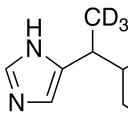Crystal structure of the yeast TSC1 core domain and implications for tuberous sclerosis pathological mutations.
Parole chiave
Astratto
Tuberous sclerosis complex is a disease caused by mutations in two tumor-suppressor genes, TSC1 and TSC2. The TSC1 protein, also known as hamartin, has a critical role in controlling mTOR signalling. TSC1 does not bear apparent sequence homology with other proteins. Here we show that the N-terminal half of yeast TSC1 forms a protease-resistant domain, which is evolutionarily conserved. The crystal structure of this yeast TSC1 core domain shows that it contains a pseudo-HEAT repeat fold with its C-terminal end capped by a helical subdomain. This allows us to model the three-dimensional structure of the human TSC1 N-terminal domain (TSC1-NTD), which anchors essentially all pathogenic TSC1 missense mutations found in tuberous sclerosis patients. Interestingly, most pathogenic mutations map inside of the folded TSC1-NTD structure, whereas most non-pathogenic variants are on the structural surface. This indicates that the disruption of the TSC1-NTD globular structure is a major cause of tuberous sclerosis.



